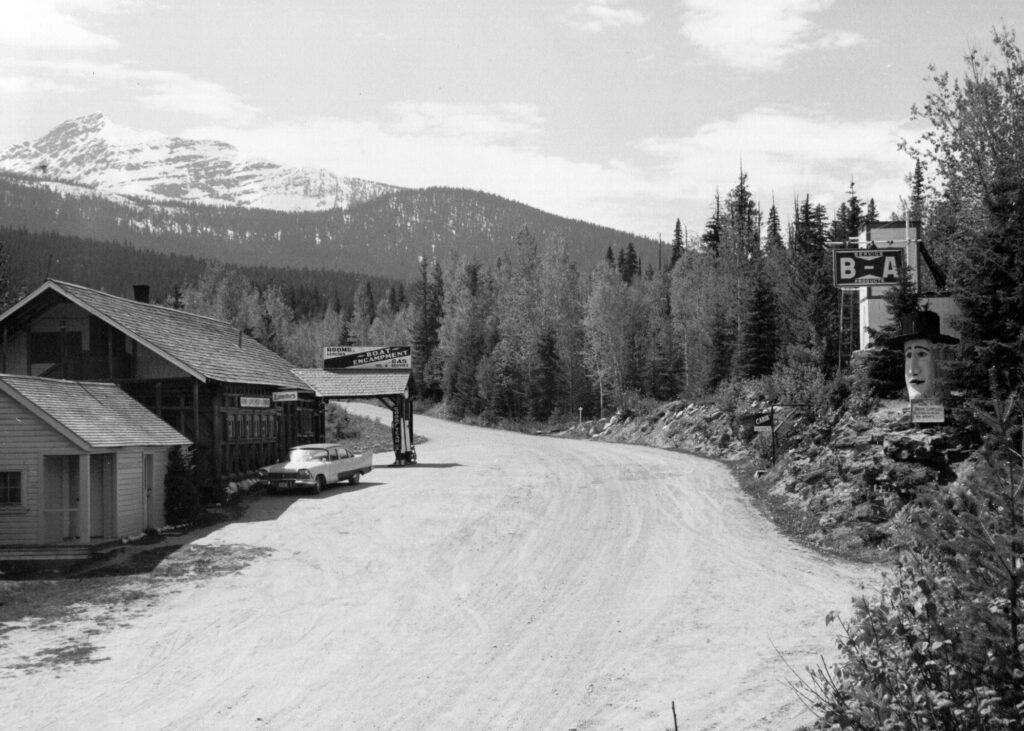Boat Encampment
by Colleen Palumbo

The information for this blog came originally from the small newsletter called the Mica Murmur and was reprinted in the Golden Star, on Mar 3, 1966. Many visitors to the museum ask about Boat Encampment which is now completely covered by water as a result of the building of the Mica Dam.
Boat Encampment is an odd name to be given a spot in the heart of the mightiest mountain range on the continent. Yet, when the reasons are given it is obvious that no other could be more appropriate.
Aside from possibly Tete Jaune Cache, it was the first place in the province named by white men. Situated at the apex of the Columbia where, that steam is augmented by the flow of the Canoe and Wood rivers, the scene is of the same breath-taking beauty today as it was when David Thompson first saw it, in the late winter of 1811.
Thompson was on his way to the Pacific via the Columbia, and in order to travel down the river he had to first build boats. It was at this point that he built them, hence the name.
Here the long portage from over the Athabasca Pass through the Rockies ended at the almighty Columbia, and for some years this was an important junction on the main fur route of the province. With the removal of the HBC coast headquarters from Fort Vancouver on Vancouver Island, this route gradually fell into disuse, and the voyageurs no longer made echoes resound from the mountains with their trail songs.
Thompson was probably the first to build boats here, and according to his journal, he had considerable difficulty. In vain he and his men searched for suitable birch trees to rob of their bark for the construction of canoes. Plenty of birch were found, and were big enough, but the bark was too thin to be satisfactory. Finally they were forced to use an entirely different method of construction.
So they split cedar boards and sewed them together with split spruce roots as he says, with the greates difficulty.
Strangely enough, instead of going down the rivers, as anyone would have thought, he went upriver t o the headwaters, and thence by many streams and portages reached the Columbia again below what is now the United States Boundary.
Up to 1940, this old historic site was to all intents and purposes, inaccessible to the tourists; but with the construction of the Big Bend Highway it became possible to reach it by car. Today, while only a hamlet as far as size is concerned, it is an important point on the sparsely populated highway. It boasts a motel, four star class at that, as well as a store and filling station.
The original motel at Boat Encampment burned down and in its place now stands a lovely modern building which consists of a restaurant, dining room and motel units. Mr. and Mrs. Tinsted have created a warm friendly atmosphere at the inn and the food is delicious. To the south of the inn is a thriving sawmill and to the north a trailer court and filling station. The small airport which serves the Mica Project is just a few miles northeast of the settlement.
It also had a novel sign to remind motorists to drive carefully as may been seen in the province. This consisted of a huge wooden head, topped by an old fashioned plug hat. It was carved by an Italian workman during the road building days of 1937-38, from the chin to the eyebrows, it was the height of a man, and in front of it was the sign which read “Don’t be a Wooden Head. Drive Carefully. You’ll live to enjoy the scenery.”
The wooden head which belongs to Boat Encampment was stolen some years ago and now stands near the highway at the Revelstoke turnoff. It would be interesting to find out who the culprit was and how the wooden head got to Revelstoke.
